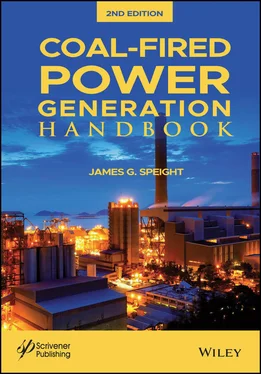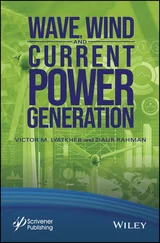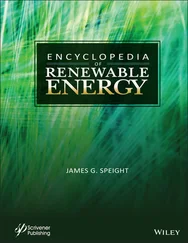Coal petrography employs various methods of investigation. In methods of optical microscopy, for example, the specimen may be viewed in air or in immersion; both transmitted-light and reflected-light methods are used, and the light may be ordinary, polarized, or ultraviolet. Specimens may be separated into groups of components of similar density in heavy liquids (mixtures, for example, of carbon tetrachloride tribromomethane). Depending on the source material and the conditions of the transformation of this material (in the so-called peat stage of coal formation) the micro-petrographic components are classified into three basic groups (vitrinite or gelinite, fusinite, and liptinite) ( Table 2.9). The composition of the source plants and the quantitative relations between micro-petrographic components determine the genetic types of coal, which are characterized by definite chemical and technological properties within each stage of coalification.
Thus, coal petrology is the science in which coal type is related to the type of plant material in the peat and the extent of the biochemical and chemical alteration. Type can be assessed in terms of variety of petrographic analysis. Coal petrology is concerned with the origin, composition and properties of the distinct organic and inorganic components of different coals. To date, the principal practical application of coal petrology has been in the specification and selection of coals for carbonization (Speight, 2013 and references cited therein).
From the data obtained from coal petrology, the rank (defined by vitrinite reflectance) and composition (maceral proportions) of coal can be determined. Coal macerals are optically homogenous, discrete microscopic constituents of the organic fraction of coal, and they constitute the building blocks of coal and are identified and classified on the basis of their morphology, source material, color/level of reflectivity, and nature of formation. Macerals differ because they represent different part of the plant material and microorganisms. From petrographic studies, coal is shown to comprise three main mac-eral groups: (i) the vitrinite group, (ii) the exinite group also known as the liptinite group, and (iii) the inertinite group.
Table 2.9 Nomenclature and Sub-division of the Various Maceral Groups.
| Maceral group |
Maceral |
Origin |
| Vitrinite |
Telinite |
Humified plant remains typically derived from woody, leaf, or root tissue with well to poorly preserved cell structures |
| Collinite |
Humified material showing no trace of cellular structure, probably colloidal in origin |
| Vitrodetrinite |
Humified attrital or less commonly detrital plant tissue with particles typically being cell fragments |
| Liptinite (exinite) |
Sporinite |
Outer casing of spores and pollens |
| Cutinite |
Outer waxy coating from leaves, roots, and some related tissues |
| Resinite |
Resin filling in cells and ducts in wood; resinous exudations from damaged wood |
| Fluorinite |
Essential oils in part; some fluorinate may be produced during physicochemical coalification and represent nonmigrated petroleum |
| Suberinite |
Cork cell and related issues |
| Bituminite |
Uncertain but probable algal origin |
| Alginite |
Tests of some groups of green algae; material referred to alginate shows moderate to strong fluorescence |
| Exudatinite |
Veins of bitumen-related material expelled from organic matter during coalification |
| Liptodetrinite |
Detrital forms of liptinite that cannot be differentiated |
| Inertinite |
Fusinite |
Wood and leaf tissue oxidation |
| Semifusinite |
Wood or leaf tissue weakly altered by decay or by biochemical alteration |
| Inertodetrinite |
Similar to fusinite or semifusinite but occurring as small fragments |
| Macrinite |
Humic tissue probably first gelified and then oxidized by processes similar to those producing semifusinite |
| Sclerotinite |
Moderately relflecting tissue of fungal origin, largely restricted to Tertiary coals |
| Micrinite |
Largely of secondary origin formed by disproportionation of lipid of lipidlike compounds |
The maceral that fall into the vitrinite group are derived from the humification of woody tissues and can either possess remnant cell structures or be structureless. The structureless maceral could have resulted due to the degradation process that takes place during coal diagenesis. Chemically it is composed of natural (so-called) polymers , cellulose and lignin. Vitrinite has a shiny appearance resembling glass (vitreous).
The variation in vitrinite macerals is usually thought to be due to differences in the original plant material or to different conditions of alteration at the peat stage or during coalification. In this group, only three macerals are distinguished: (i) telenite , (ii) collinite , and (iii) vitrodetrinite . Vitrinite contains more oxygen than the other macerals at any given rank level and is prone to gas generation with densities ranging from 1.3 to 1.8 g/cm3 with a general tendency to increase with an increase in rank increases.
The telenite maceral came from different tree branches, trunks, stems, leaves and roots. The collinite maceral is formed from gel precipitated in humic solution obtained from humic particles that were degraded in the early stages of coalification. The vitrodetrinite maceral is also obtained from plants that were degraded from the early stages of coalification but this time around earlier than the stage in obtaining collinite. The concentration of hydrogen in this vitrodentrite is the range of 4.5 to 5.5%, w/w oxygen from 5 to 20% w/w, and carbon in the range of 75 to 95% w/w.
The members of the liptinite group are considered to originate from the resinous and waxy material of plants, including resins, cuticles, spores, pollen exines and algal remains. They tend to retain their original plant form, i.e., they resemble plant fossils, and are characterized by high reactivity and volatility, and are more aliphatic (Campbell et al. , 2010). The members of this maceral group can be distinguished from the members of the vitrinite group by higher hydrogen and lower oxygen content, and do have the highest calorific value of all coal macerals.
The liptinite group comprises the macerals which are (i) sporinite, (ii) cutinite, (iii) suberinite, (iv) resinite, (v) alginate, and (vi) liptodetrinite, which all appear to have resisted major changes during coalification as they are classified based on their respective fossil plant nature. The cuticles found in this maceral group came from the cuticles normally found in leaves and thin plant stems.
Sporinite is obtained from the waxy coating of fossil spores and pollen. These groups of macerals are the lightest, with their density ranging from 1.18 to 1.25 g/cm 3and during devolatilization give a high yield of volatile matter, such as gas and volatile tar. The liptinite content is the least recognized of three maceral group because of the generally low content, which (in many international coals) may rarely exceed 7% v/v of the total maceral composition.
The members of the inertinite group are considered to be equivalent of charcoal and degraded plant material and originate from plant material, usually woody tissues, plant degradation products, or fungal remains. Inertinite macerals are characterized by high reflectance, as well as a distinct cell texture and are highly oxidized in nature with a high inherent carbon content that resulted from thermal or biological oxidation.
Читать дальше












